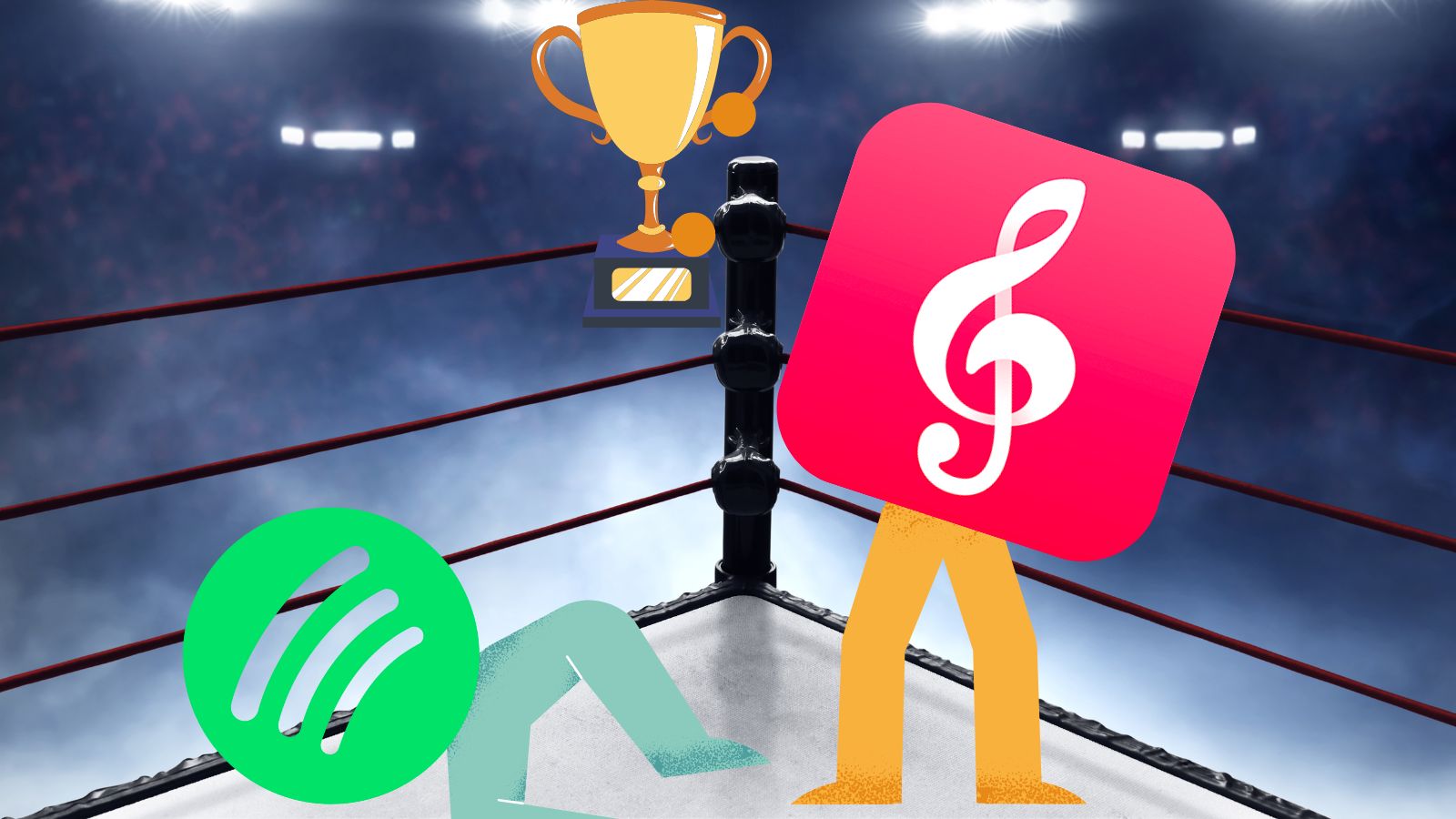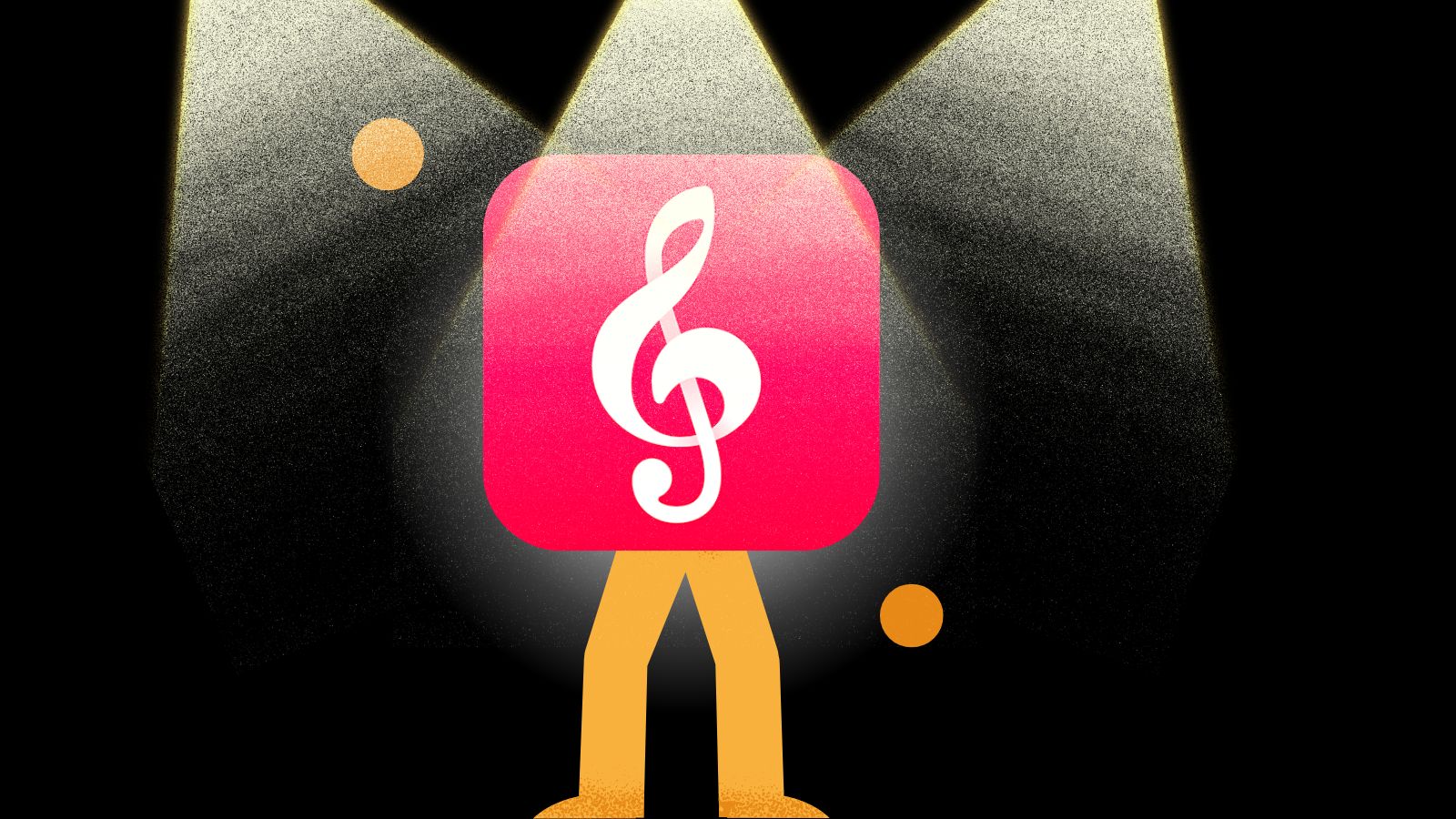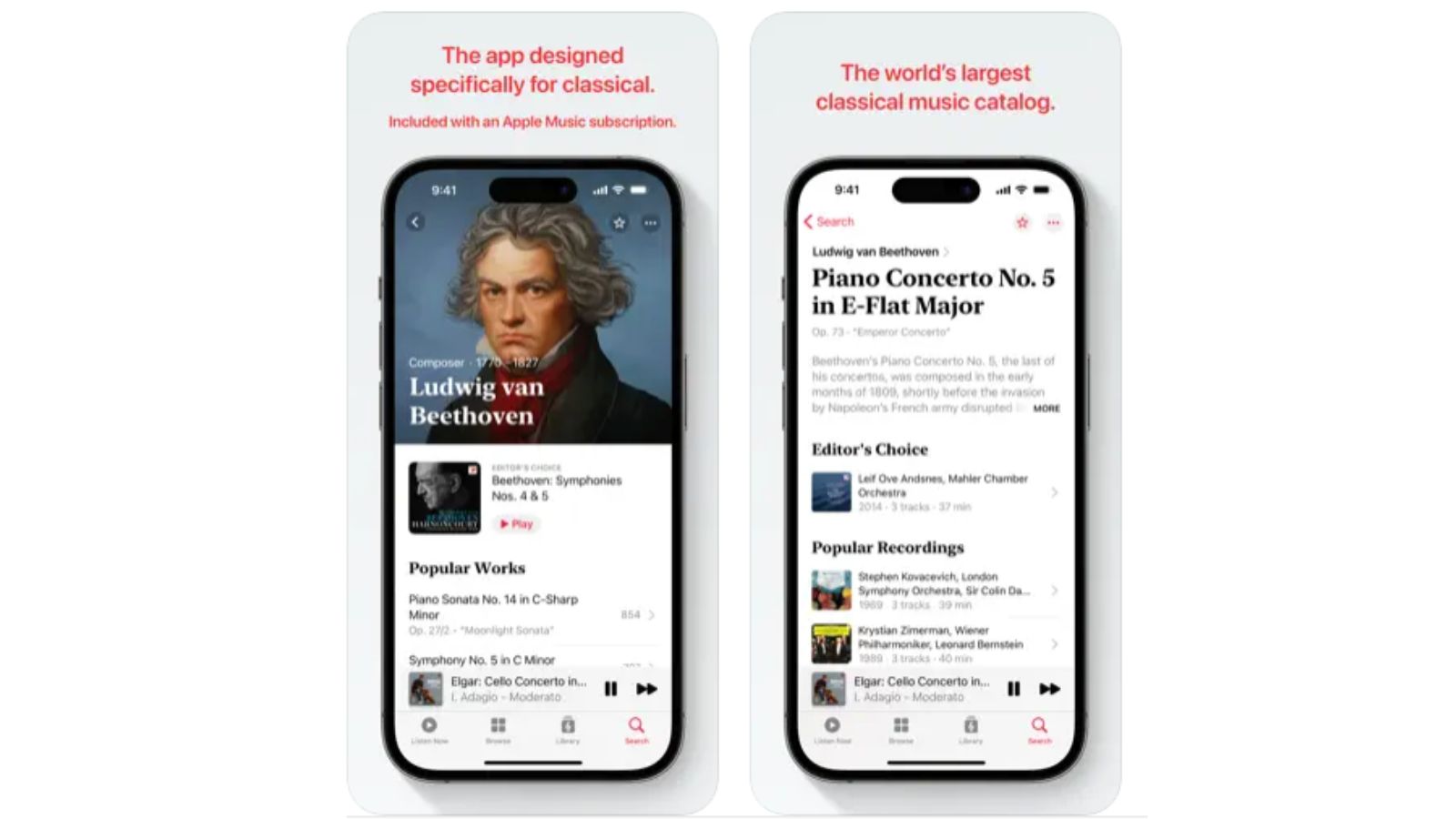This week in Music Streaming: Apple Music Classical and the continued blunders of Spotify
New apps, and long-awaited features.

News about music streaming tends to come in dribs and drabs, with little details appearing when you least expect it. Over the last couple of weeks, however, things have been a little more lively, with both good and bad news coming from several camps. There’s been a lot to get excited about for anyone who streams music, but if you’re a classical music fan, then you’ve got big reasons to be what the kids would call ‘hyped’.
Apple Music Classical has finally been announced properly and given a release date, putting Apple firmly in the ‘good news’ side. Spotify has had less fun, however, with its new app makeover receiving a less-than-positive reaction. That was compounded with the Spotify HiFi news. Yes, the lossless version of the green streamer is coming, but they won’t say when or how much extra it will cost.
Apple Music Classical is on the way…

… with some cool features to go with it. Ever since Apple bought and summarily closed down the Classical Music streaming service PrimePhonic in 2020, users have been waiting for the new app. PrimePhonic was already something that I had been using before it shut down. I might not be one of the super fans of classical music that have folders upon folders of classical music and could tell you all the different recordings of the most niche composers, but I listen to a fair amount of the genre.

PrimePhonic was brilliant because it set everything out how a classical music listener would want. The search function had been built from the ground up for classical music, with parameters around not just title, album, and artist but for things like composer, conductor, recording and more.
See, Classical music is a lot more complicated than the stuff you hear on the radio or might stream on a music streaming app. For something like Dua Lipa’s Levitating, there’s just the artist, track title, and album to worry about. With a piece of classical music, there are more bits to each piece.
There’s the composer who originally composed the piece, and the collection, symphony, or work that the piece is a part of. There are then different recordings of that piece, each with its own parameters. There’s a conductor, orchestra, and year of recording. There might be a specific maestro or player that played on a particular recording that you might want to find. There might even be multiple different parameters within each result.
For example I might like a particular piece played by a particular orchestra, with a particular conductor, in a particular year. That same piece may have been played by the same orchestra but with a different conductor in a different year. Maybe you prefer the version of the piece played by a different orchestra, but the same composer in another different year.
iMore offers spot-on advice and guidance from our team of experts, with decades of Apple device experience to lean on. Learn more with iMore!

This is just scratching the surface of why PrimePhonic was so good for classical music, and it feels good to see that the feature will be returning for Apple Music Classical. There is more for people like me to be excited about with the announcement as well.
There’s support for Apple Music Lossless, one of my favorite parts of Apple Music. There will also be detailed composer bios, where you can learn more about the people who make the music while you listen. Expect the same for the pieces as well, in lieu of the lyrics screens of Apple Music. For Opera, this could be interesting. Not because you might want to sing along (although some might), but because you might not be able to follow along. How this works remains to be seen.
For one, Apple hasn’t said if they’ll take classical music off the standard Apple Music app, and there’s a not insignificant part of me that wonders if it will.
I am a little worried, in parts. For one, Apple hasn’t said if they’ll take classical music off the standard Apple Music app, and there’s a not insignificant part of me that wonders if it will. It would make sense from a business standpoint – want classical music? Here’s a separate app for you to use.
It would perhaps declutter the main app as well, with less extra music on there for the unsuspecting to stumble across. But there's the concern. Apple Music is pretty good for music discovery as you ping around the app and find new music to listen to. I know someone that used to listen to lots of movie soundtracks but was introduced to more conventional classical music by the suggestions that Apple music gave them.
If people aren’t interested in classical music, they’re not going to look at getting the app. So if Apple removes classical music from the Apple Music app, there will be less chance of those listeners finding classical music they like. It would be, in my eyes, a concerning blow to music discovery.

Another thing that Apple is yet to talk about regarding the new app is how it pays artists. PrimePhonic introduced something that completely changed how artists are paid for classical music, upending a model skewed toward more conventional music types.
Where usually a listener has to reach a certain percentage of a track before they are paid, PrimePhonic did a pay-per-minute model. The traditional streaming model meant that Classical music and its extremely long track lengths often lost out on monetized streams - after all, 20 percent of a 3-minute track is a whole lot less than 20 percent of one that lasts an hour. It would be great to know if PrimePhonic's method of paying artists will carry over to Apple Music Classical, but at the moment, there is no news.
I can’t wait to try Apple Music Classical. I’ve been lamenting the last moments of PrimePhonic now for two years, and I can’t wait to see what Apple has done with it. I just hope it doesn’t let us down. Oh, and unlike the internet, I think that new icon looks great.
Spotify’s dreadful new app

One of the most contentious things to come from the world of music streaming recently is Spotify’s new-look app. Announced and then released in a trickle to users' devices, it left most wondering, ‘why on earth does my music platform look like TikTok?’. Our Editor in Chief has made sure that the world knows how much he doesn’t like it, but he understands why Spotify has done it.
In keeping with the world's obsession with short-form content, Spotify’s app now features small cards on the front page that you can sort through and watch short videos and audio clips as you scroll endlessly down, and down, and down, and down…

As Gerald remarks, you can understand why Spotify has made this change. It can’t create separate apps for all its features like Apple or Amazon can because it simply doesn’t have the sway it would need. It has the audio streaming space pegged down, but that is no longer enough.
As with all companies it needs to get bigger and bigger until the heat death of the universe, or until everyone decides that it no longer wants to support the big green circle. In order to grow, Spotify needs to keep going with new features, and it has to put them in its one app, so that its customers and users get those features delivered to their digital door.
As with all companies, Spotify needs to get bigger and bigger until the heat death of the universe
I get why it happened, but it doesn’t make the UI any less awful to use. Gone are the incredibly helpful suggestions of new artists, albums, and songs, replaced by an abomination. It completely takes the focus away from the music, the whole reason you likely subscribed to the platform in the first place. Your library is buried, and your music is that much harder to find.
Spotify hasn’t solely been a music app for some time, but now it really looks the part too. If this doesn’t draw users away to something more ‘pure’ like Apple Music, I don’t know what will. I am unlikely to continue to use the service after this, that’s for sure.
Spotify charging for HiFi

Most recently, Spotify has come under some flak for the handling of its as-yet-unreleased HiFi listening tier. It’s been a thing for a long time, having been announced around two years ago.
The problem is that everyone else beat it to the punch and released lossless streaming platforms before it had even said ‘here’s Hi…’. Between news that you’ll likely have to pay for it, unlike with Apple Music and Amazon Music Unlimited, and that it will come with extra features like premium podcast stuff and access to Spatial Audio/Dolby Atmos, it feels like Spotify HiFi is dead before it has even arrived.
There’s an overwhelming feeling that it’s simply too little, too late. There are already firmly established high-quality streaming services for audiophiles, like Tidal and Qobuz, with Apple and Amazon filling in for the Layperson. Podcast fans aren’t likely to be particularly happy about paying extra for premium podcast stuff (of which the type is not detailed). Apple and Amazon provide Spatial Audio tracks for nothing extra on top of your ordinary subscription. Spotify has long been at the top of the streaming tree, but its recent announcements and blunders seem to show that the tree is starting to sway.
Big week for music streaming
For better or worse, this week, if nothing else, has been very interesting. There’s been lots of news around Apple Music Classical, which overall feels pretty exciting, particularly if you’re a fan of classical music. On the other hand, Spotify’s last week has been one to forget, from slightly noncommittal statements about Spotify HiFi, to its bungled app launch and dreadful new UI. It will be interesting to see what the music streaming landscape looks like a few months from now, that’s for sure.

As iMore's Senior Staff writer, Tammy uses her background in audio and Masters in screenwriting to pen engaging product reviews and informative buying guides. The resident audiophile (or audio weirdo), she's got an eye for detail and a love of top-quality sound. Apple is her bread and butter, with attention on HomeKit and Apple iPhone and Mac hardware. You won't find her far away from a keyboard even outside of working at iMore – in her spare time, she spends her free time writing feature-length and TV screenplays. Also known to enjoy driving digital cars around virtual circuits, to varying degrees of success. Just don't ask her about AirPods Max - you probably won't like her answer.
